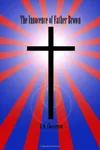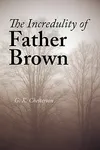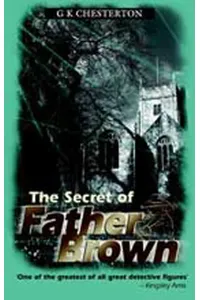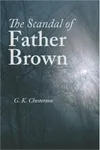Step into the charmingly mysterious world of Father Brown, where a humble Catholic priest unravels crimes with a twinkle in his eye and a knack for understanding the human heart! Created by G.K. Chesterton, the Father Brown series is a cornerstone of detective fiction, blending cozy mysteries with profound insights into morality and human nature. With his unassuming demeanor and trusty umbrella, Father Brown proves that appearances can be deceiving as he solves cases that baffle even the sharpest minds.
Unlike the flashy Sherlock Holmes, Father Brown’s quiet brilliance lies in his empathy, making him a detective who feels as much as he thinks. Let’s explore how this unpretentious sleuth became a literary icon!
How Father Brown Began
In 1910, G.K. Chesterton, a prolific English writer and philosopher, introduced Father Brown in the short story 'The Blue Cross,' published in The Story-Teller magazine. Inspired by his friend, Father John O’Connor, a priest whose deep understanding of human sin fascinated Chesterton, the character embodied a unique blend of faith and detective prowess. Chesterton, a master of wit and paradox, crafted Father Brown as a counterpoint to the era’s hyper-rational detectives, emphasizing intuition over cold logic.
The series grew from this single story into 53 short stories, published between 1910 and 1936, compiled into five main collections. Chesterton’s Catholic faith and love for parables shaped the stories, making them as much about the soul as about solving crimes.
The Heart of Father Brown
The Father Brown series spans five key collections, each brimming with clever mysteries and rich themes. 'The Innocence of Father Brown' (1911) introduces the priest in stories like 'The Blue Cross,' where he outwits the master thief Flambeau, and 'The Invisible Man,' a tale of a seemingly impossible murder. 'The Wisdom of Father Brown' (1914) deepens the priest’s character with cases like 'The Paradise of Thieves,' set in the Italian countryside. 'The Incredulity of Father Brown' (1926) tackles exotic crimes, while 'The Secret of Father Brown' (1927) reveals his method: empathizing with the criminal’s mindset. Finally, 'The Scandal of Father Brown' (1935) wraps the series with bold, morally complex tales.
Chesterton’s stories are set in early 20th-century England and beyond, with vivid settings ranging from quaint villages to gothic estates. Themes of faith, redemption, and the duality of human nature run deep, with Father Brown often solving crimes by understanding the sinner’s heart rather than relying on clues. His unassuming nature—described as a 'round-faced, Norfolk dumpling'—hides a razor-sharp mind, making the stories both cozy and intellectually stimulating.
The series’ style is marked by Chesterton’s poetic prose and philosophical musings, which elevate the mysteries into parables. While some plots verge on the improbable, their charm lies in their wit and moral depth, setting them apart from the more formulaic detective tales of the era.
Why Father Brown Resonates
Father Brown’s enduring appeal lies in his humanity. Unlike Sherlock Holmes, who dazzles with logic, Father Brown connects with readers through his compassion and insight, offering a refreshing take on the detective genre. The series helped legitimize detective fiction during its Golden Age, influencing writers like Agatha Christie, whose Miss Marple shares Father Brown’s knack for blending ordinariness with brilliance.
The stories’ blend of mystery and morality continues to captivate, inspiring adaptations like the BBC’s Father Brown series, which reimagines the priest in a nostalgic 1950s setting. Fans cherish the series for its clever plots and Chesterton’s ability to make even the most far-fetched crimes feel profoundly human.
- First Published: 1910 ('The Blue Cross')
- Number of Stories: 53 across five collections
- Notable Adaptation: BBC series (2013–present)
Grab 'The Innocence of Father Brown' and dive into a world where faith, wit, and a trusty umbrella solve the trickiest mysteries!




